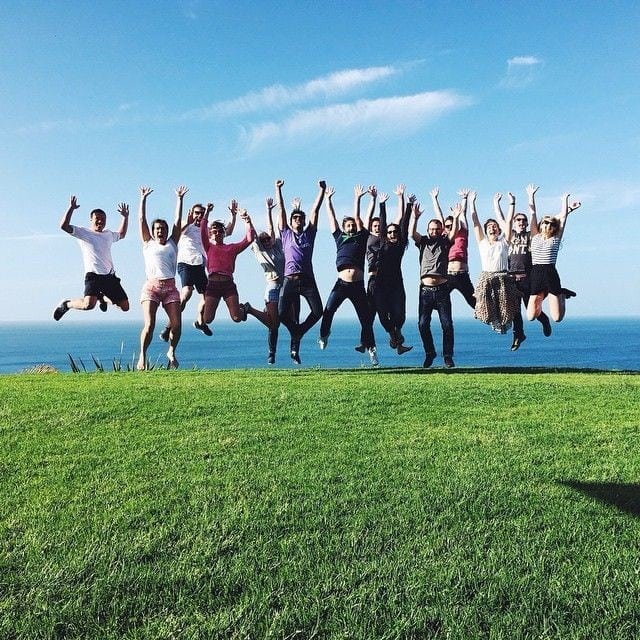Offsites have become an integral part of corporate culture, offering teams a chance to step away from daily routines, reflect on goals, and build stronger connections. Whether it’s a leadership retreat, a strategic planning session, or a team-building experience, a well-planned offsite can boost collaboration, alignment, and innovation.
At FocusU, we have helped organizations design impactful offsites that leave a lasting impact. In our experience, a well-planned offsite goes beyond just picking a great location — it involves clarity in objectives, structured activities, and a clear follow-through.
Here’s our guide to planning a productive offsite that delivers real results.
Table of Contents
1. Define Your Objectives Clearly
Before planning, ask yourself: What do we want to achieve?
An offsite should never just be about relaxation — it should have a defined purpose. Some common goals include:
- Strategic planning (for leadership teams)
- Improving communication and collaboration across departments
- Encouraging innovation through brainstorming sessions
- Boosting employee engagement with team-building activities
Tip: Involve employees early in the planning process. Ask them what they expect from the offsite. (Check out our blog on 4 Things Employees Expect at an Offsite for insights.)
2. Choose the Right Format
The format of your offsite depends on your objectives:
- Leadership Retreats & Strategy Sessions – Ideal for CEOs, senior executives, and managers, these retreats focus on aligning vision and leadership development.
- Team-Building Offsites – Incorporating experiential learning activities to enhance collaboration, trust, and morale.
- Skill Development Offsites – Focused on training programs, such as agile leadership, resilience, and problem-solving.
Each format requires different planning. If your focus is on long-term strategic planning, having a strategic planning retreat facilitator can be valuable.
Need inspiration? Check out our 20 Themes for Your Next Corporate Event or 20 Themes for Your Next Virtual Event.
3. Pick the Perfect Venue
Selecting the right venue is crucial. Leadership retreats and strategy sessions may require a secluded, peaceful setting, while team-building offsites benefit from open spaces or adventure-friendly locations.
Things to consider when choosing a venue:
- Accessibility for all participants
- Facilities for meetings & breakout sessions
- Space for team-building activities
- Comfortable accommodations & good food options
Tip: Avoid booking a conference room in your office. Offsites should take employees out of their usual environment.
Related Read: What Not to Do for Corporate Offsites
4. Plan Engaging Activities
Team-building activities are the heart of any offsite. They help foster collaboration, improve communication, and break down silos. Depending on the goal, activities can range from outdoor adventures to structured problem-solving challenges.
Some activity ideas:
- Creative Problem-Solving – Challenges that promote strategic thinking
- Outdoor Team Challenges – Activities like obstacle courses, treasure hunts, or survival simulations
- Storytelling & Leadership Workshops – Learn the art of communication and influence
5. Encourage Leadership Involvement
One mistake organizations make is treating offsites as a “break” for employees while leaders stay in the background. Leadership involvement is crucial.
A leadership offsite facilitator can guide meaningful discussions and help align leadership vision with team expectations. Leaders should actively participate in team-building exercises, share their challenges, and engage with employees to make the experience impactful.
Want more ideas? Check out our blog on Top 10 Themes for your next Leadership Team Retreat
6. Make sure each participant is invested:
It goes without saying that a great facilitator nurtures engagement before, during, and after the offsite. Make sure to check in with each participant to find out what his or her expectations of the day are and ensure the activities that are aligned with the goals. If possible, provide them with opportunities where they can play a lead role in a particular session. Bringing out the best in them is the point of focus here. This can lead to a boost in confidence and enhanced performance in their activities.
7. Don’t Forget About Logistics
Good planning includes:
- Pre-offsite Communication – Send agendas, travel details, and expectations in advance
- Balanced Schedule – Mix formal sessions with social interactions
- Wellness & Downtime – Keep a few open slots for relaxation or networking
Common Mistakes to Avoid: Read our blog on What Not to Do in a Team Offsite to learn about the pitfalls of poor offsite planning.
8. Incorporate Learning & Development
A productive offsite is not just about fun — it should also drive growth and development. Incorporate:
- Workshops on growth mindset and leadership skills
- Sessions on personal and professional development
- Discussions on adaptability and innovation in the workplace
It is vital to make the time spent off site to be worthwhile. The focus of any offsite event is to get people to exchange ideas in constructive ways and invoke creative thinking that results from it.
Looking for books to inspire your team? Check out our 10 Best Books to Gift Your Team During a Team Offsite.
9. Make It Memorable with Thoughtful Gifting
A thoughtful gift can reinforce the impact of the offsite. Instead of generic swag, consider:
- Customized journals for note-taking
- Personalized mementos reflecting company values
- Books on leadership & teamwork
Read our guide on 4 Gifting Ideas for Your Next Offsite for inspiration.
If you believe books make the perfect gift, then check out 10 best books to gift your team during a team offsite
10. Follow Up & Reinforce Learnings
An offsite is only effective if its lessons are implemented post-event. Key takeaways should be documented, and leaders should ensure that action items discussed during the offsite translate into real changes in the workplace.
Post-offsite follow-ups can include:
- Surveys to gather feedback
- One-on-one meetings to reinforce key takeaways
- Follow-up team sessions to track progress
Final Thoughts
A productive offsite is not just an event — it’s an investment in your team’s engagement, growth, and leadership development. With the right planning, your offsite can leave a lasting impact, fostering a culture of collaboration and continuous learning.
Are you planning an offsite soon? We’d love to hear about your best practices and experiences. Drop us a message!










